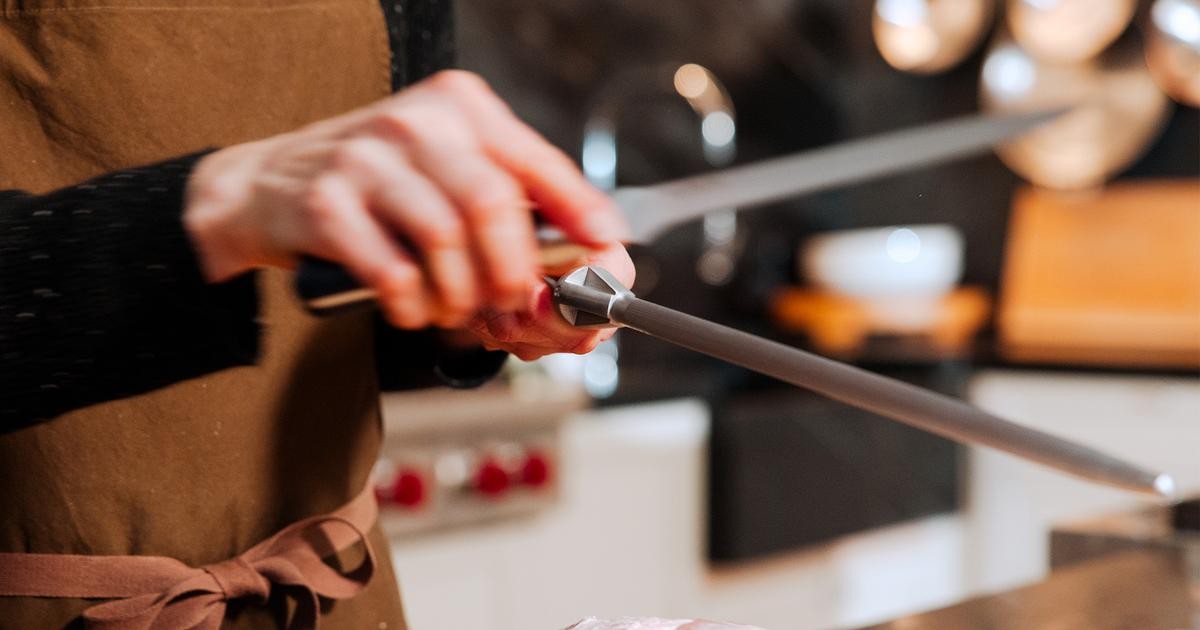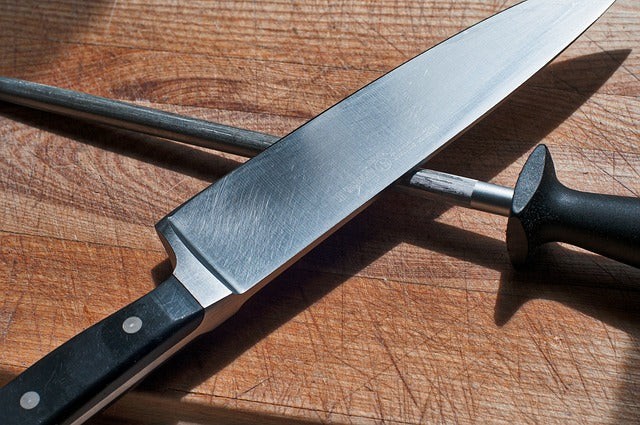Mastering the Art of Honing: Prolong Your Knife’s Edge

A sharp knife is the unsung hero of every kitchen, and chefs everywhere understand its critical role. Whether you’re working in a bustling restaurant or cooking at home, keeping your knives sharp isn’t just about cutting cleanly—it’s about safety, efficiency, and precision. Yet, there’s one skill that often gets overlooked, and it’s not sharpening. It’s honing. This subtle but powerful technique can make a world of difference in prolonging your knife’s edge, saving you from the hassle of frequent sharpening sessions.
But what exactly is honing, and why should you incorporate it into your routine? Let’s break it down.
Honing vs. Sharpening: Understanding the Difference
It’s easy to confuse honing with sharpening, especially since they both involve improving your knife’s performance. But these are two distinct processes. Sharpening grinds away metal from the blade to create a new edge, while honing simply realigns the existing edge.
Over time, the fine edge of your knife naturally bends or warps, especially when used for hard tasks like chopping root vegetables or cutting through bone. When this happens, your blade feels dull—not because it’s lost its sharpness, but because the edge is out of alignment. Enter the honing steel, a long, cylindrical rod used to straighten the blade’s edge.
By incorporating regular honing into your knife care routine, you’re not just extending the life of your knife’s edge but also postponing the need for sharpening. This saves time, money, and the wear and tear on your blade.

The Art of Honing: Technique Matters
Now that you know the value of honing, it’s time to master the technique. Proper honing requires focus and finesse, but with practice, it becomes a quick and easy habit.
- Choose the Right Honing Steel: There are different types of honing steels—ceramic, diamond-coated, and stainless steel. For everyday use, a stainless steel rod works well, but if you’re dealing with very fine, delicate blades, a ceramic honing rod may be your best bet. Diamond-coated steels are more abrasive and should be used sparingly, as they can remove metal from the blade, crossing over into sharpening territory.
- Find the Right Angle: The angle at which you hold the knife against the honing steel is critical. Most knives require a 15 to 20-degree angle, but if you’re using a Japanese knife with a sharper edge, you’ll need to reduce that angle to 10 to 15 degrees. Maintaining consistency is key. An angle guide can be handy, especially for beginners who are still developing the muscle memory needed for accurate honing.
- The Proper Motion: Place the heel of the knife at the top of the honing steel, angling the blade as needed. Then, in one smooth motion, draw the knife down the steel, moving from heel to tip. Repeat this process 5 to 10 times on each side of the blade, alternating sides with each pass. Remember to apply light pressure—honing is about realignment, not grinding away metal.
The entire process should take less than a minute once you’ve got it down. As they say, practice makes perfect. And with honing, it’s no different.
The Benefits of Regular Honing
Why is honing worth the effort? Simple: longevity, precision, and safety.
- Prolonging Knife Longevity: Each time you sharpen a knife, you’re shaving off a small amount of metal, gradually wearing down the blade. Honing, on the other hand, extends the time between sharpening sessions by realigning the edge rather than grinding it away. This helps maintain the blade’s shape and thickness, allowing your knife to last much longer.
- Improved Precision: A properly honed knife feels like an extension of your hand, making each cut precise and effortless. Whether you’re slicing tomatoes or trimming meat, the difference is night and day when your blade is perfectly aligned.
- Enhanced Safety: Dull knives are dangerous. Without a sharp edge, you’re more likely to use excessive force when cutting, increasing the risk of accidents. Regular honing keeps your knives sharp and safe, preventing slips and cuts.
When you consider these benefits, it becomes clear that honing isn’t just a luxury—it’s an essential part of any chef’s routine.

How Often Should You Hone?
Unlike sharpening, which should be done only when necessary (every few months or so, depending on usage), honing is a quick maintenance task you can do as often as needed. Ideally, you’ll hone your knife before or after every use. This habit ensures that your blade remains sharp, aligned, and ready for action.
If you’re pressed for time, honing once a week will still make a noticeable difference. But the more frequently you hone, the longer your knife will stay in prime cutting condition.
The Right Tools for the Job
Choosing the right tools for honing is as important as the technique itself. In addition to the honing steel, there are a few other tools that can enhance your knife maintenance routine:
- Angle Guides: For those who struggle with maintaining a consistent angle, an angle guide can be an invaluable tool. This small device attaches to the back of the knife and helps you keep a steady angle as you hone, ensuring accuracy every time.
- Magnetic Knife Strips: Proper knife storage is essential to maintaining a sharp edge. A magnetic strip not only keeps your knives organized and easily accessible but also protects the blade from the wear and tear that comes from being stored in a drawer.
- Cutting Boards: Softwood cutting boards, such as bamboo or maple, are ideal for maintaining the integrity of your knife’s edge. Avoid using hard materials like glass or marble, as they can dull your knives quickly.
Conclusion: Keeping Your Blades in Shape
Mastering the art of honing is a game changer for anyone serious about knife care. It’s a simple yet powerful technique that saves time, money, and effort while keeping your blades sharp, safe, and effective. By honing regularly, you’ll prolong the life of your knives and improve your overall kitchen efficiency.
Ready to dive deeper into maintaining your digital tools as well? Check out our post on how to Collect Dividends by Investing in a Technical Audit of Your Website and see how small tweaks can yield big results in your online performance.
If you want to sharpen your knife skills—or your web presence—sign up for our newsletter for more tips and expert insights delivered straight to your inbox.

